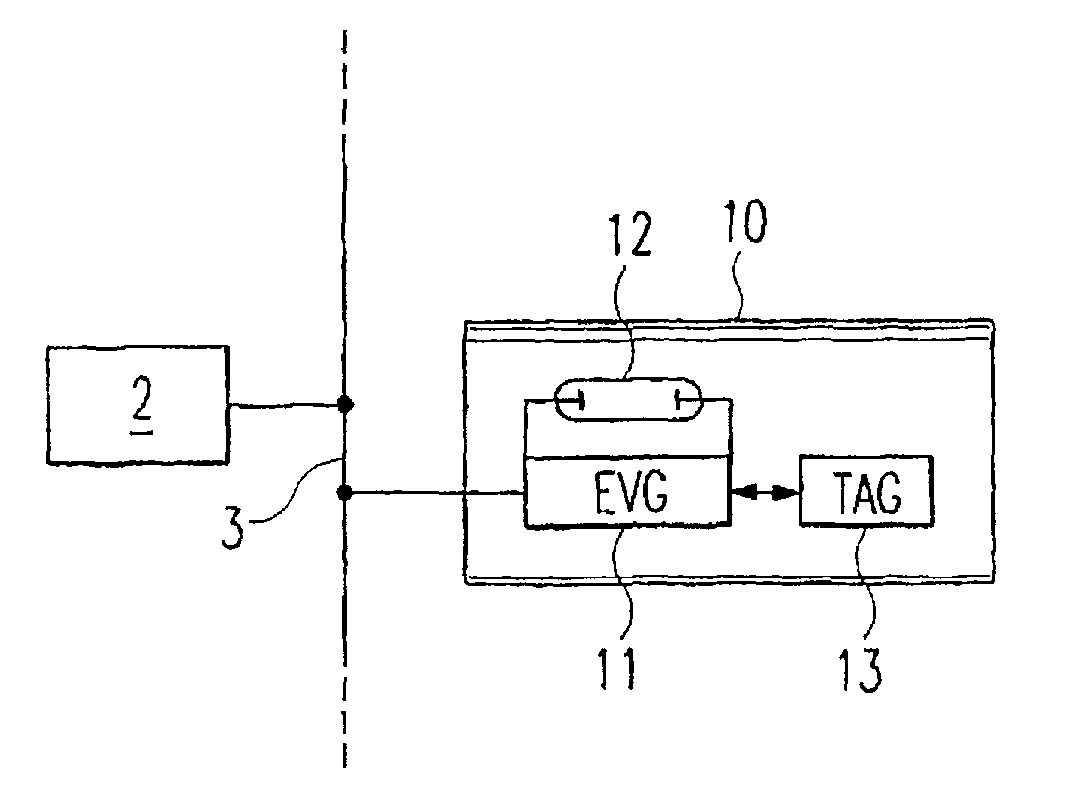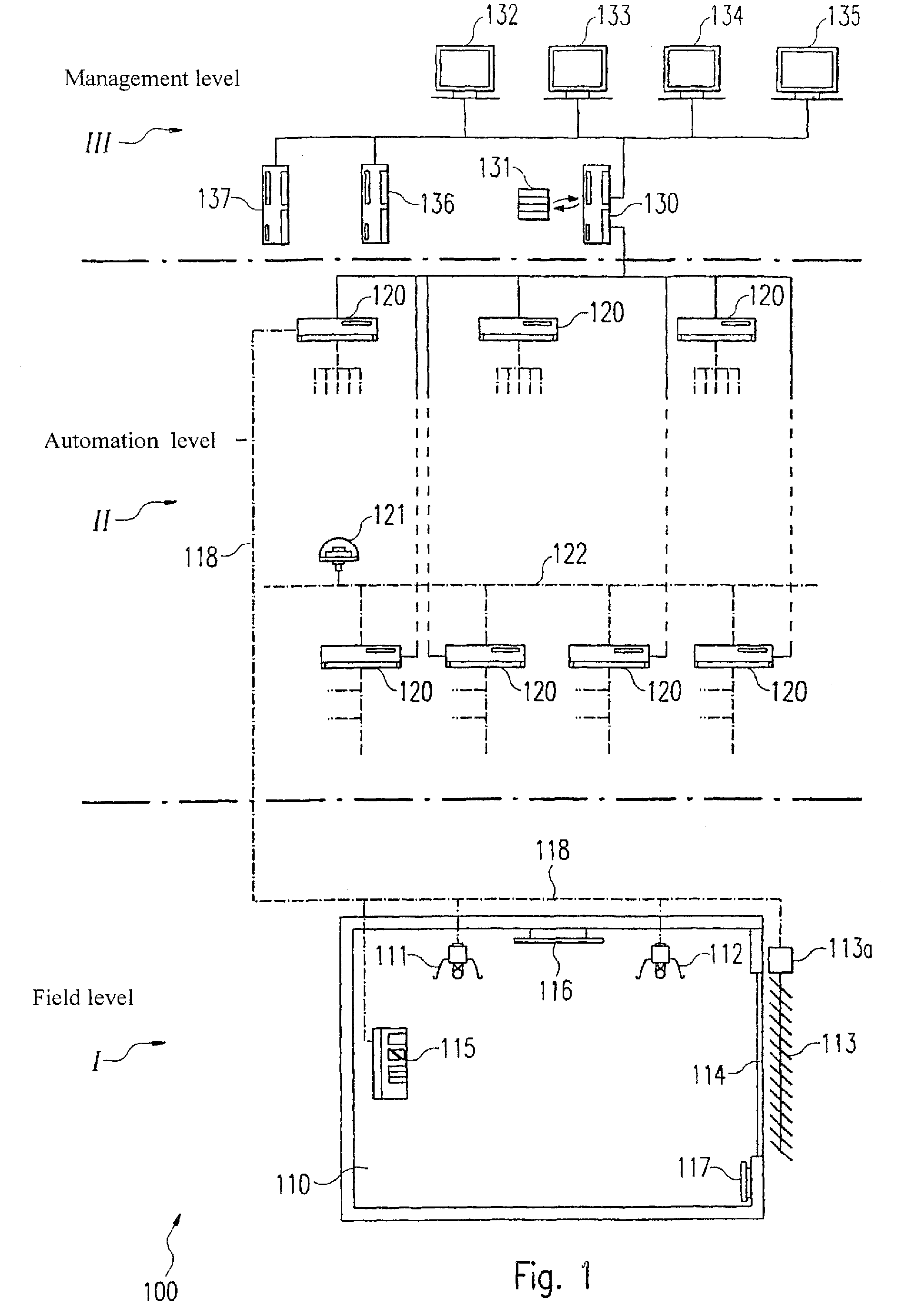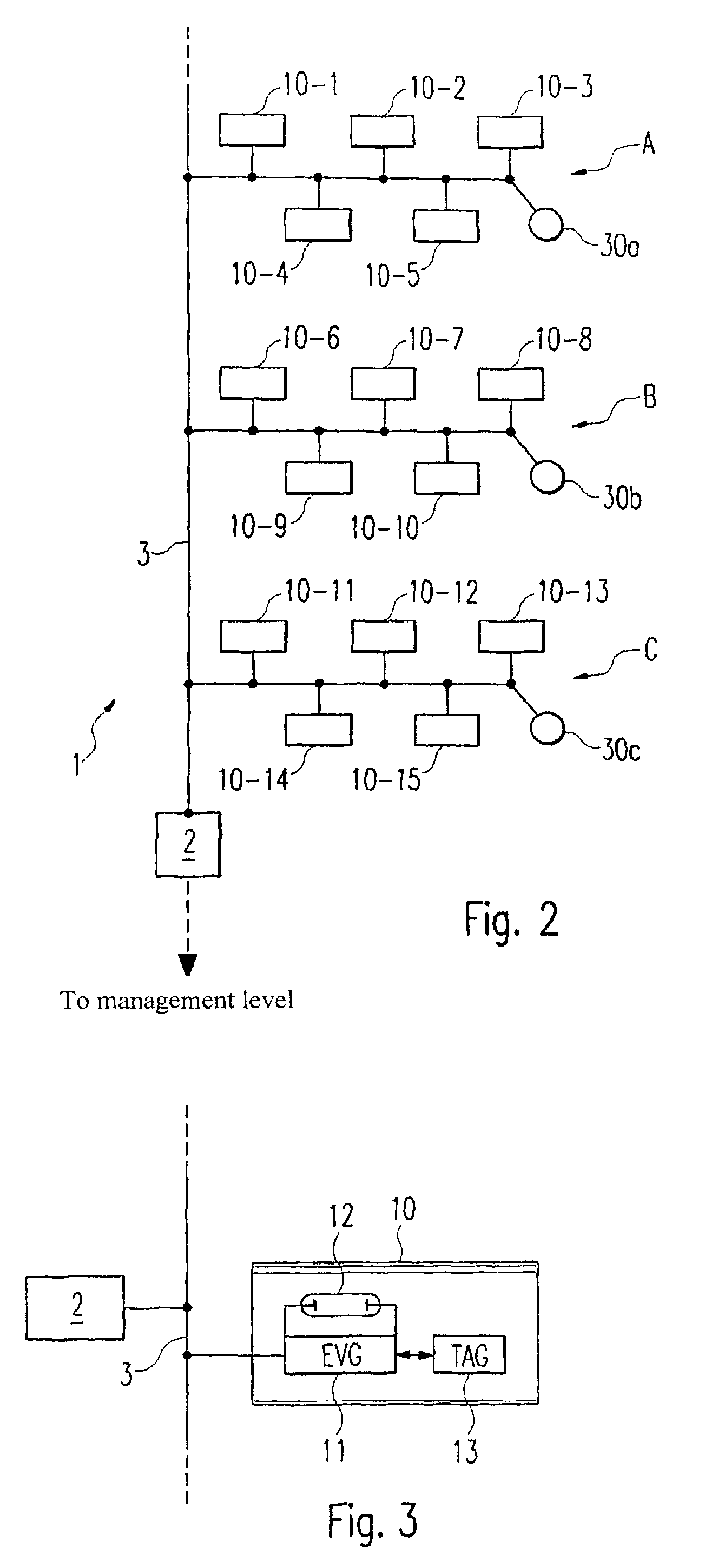Actuator with memory part for building management system
- Summary
- Abstract
- Description
- Claims
- Application Information
AI Technical Summary
Benefits of technology
Problems solved by technology
Method used
Image
Examples
Embodiment Construction
[0023]Before the configuration and manner of functioning of actuators configured in accordance with the invention is described in more detail, first the configuration of a more complex building management system will be explained with reference to FIG. 1. Thereby, FIG. 1 shows a more complex building management system which is provided for the control of a plurality of actuators within a larger building.
[0024]The building management system represented in FIG. 1 and provided overall with the reference sign 100, seen hierarchically, can be divided into three levels. Here there are involved in increasing sequence, the so-called field level I, the automation level II, and the management level III. The three levels thereby differ with regard to the devices therein and their manner of functioning, which is to be explained below.
[0025]In the lowest so-called field level I, there are located first primarily the actuators and the operating elements. The actuators may be for example the lumin...
PUM
 Login to View More
Login to View More Abstract
Description
Claims
Application Information
 Login to View More
Login to View More - R&D
- Intellectual Property
- Life Sciences
- Materials
- Tech Scout
- Unparalleled Data Quality
- Higher Quality Content
- 60% Fewer Hallucinations
Browse by: Latest US Patents, China's latest patents, Technical Efficacy Thesaurus, Application Domain, Technology Topic, Popular Technical Reports.
© 2025 PatSnap. All rights reserved.Legal|Privacy policy|Modern Slavery Act Transparency Statement|Sitemap|About US| Contact US: help@patsnap.com



